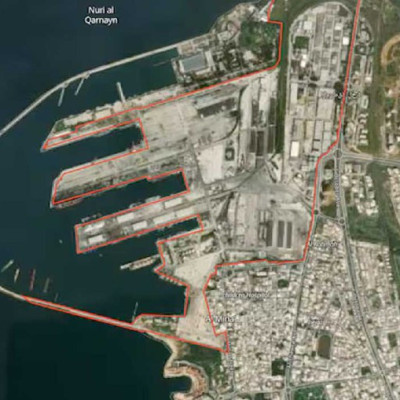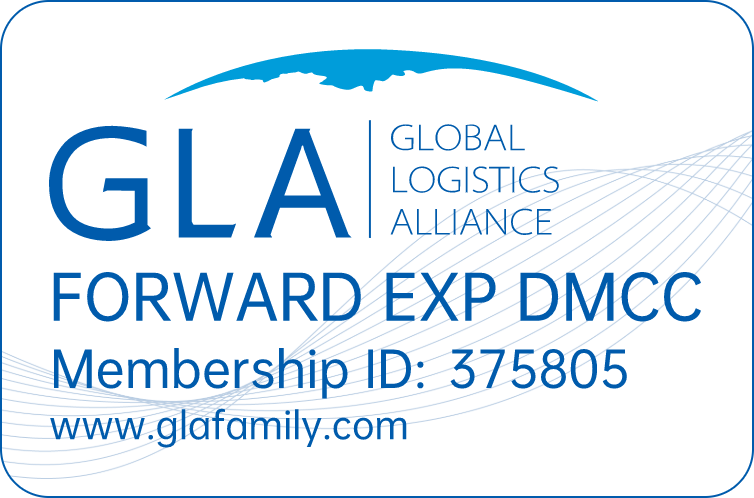Multi-Modal Transportation
Organisation of multi-modal transportation by sea, road and rail from South-East Asia to northern Europe and the Baltic states.
Insurance
Cargo insurance, consolidation and storage of goods in the warehouses of our partners.
Partners
We ensure fast orders processing, delivery in time and competitive prices. Our partners are the largest, best trucking companies and customs warehouses.
News

DP World to Invest $800 Million in Rebuilding Syria’s Tartus Port
14.07.2025
DP World has signed a 30-year concession agreement with Syrian authorities to develop the Port of Tartus. The company plans to invest $800 million in modernizing infrastructure, installing advanced equipment, and digitizing terminal operations.
The goal is to transform Tartus into a key trade hub connecting Southern Europe, the Middle East, and North Africa.
The project will follow the Build-Operate-Transfer (BOT) model and is expected to drive Syria’s economic recovery, create jobs, and expand regional trade routes.

Scammers Try Out "Safe Passage" Extortion Scheme for Strait of Hormuz
24.06.2025
Calamities are a golden opportunity for unscrupulous scammers, who often try to trick unwitting survivors out of their money by pretending to be a government agency. It appears that the same scam has been tried in shipping, according to EOS Risk Group's Martin Kelly: one enterprising fraud group has been trying to extort vessels into paying for "safe passage" through the Strait of Hormuz. Entirely fake, this solicitation promised the shipowner that the vessel would be safe from Iranian attack if the money was paid - and that the ship would be hit if not.
"Several ships reported receiving suspicious emails from an entity claiming to be a subsidiary of Iran and the Houthis, demanding payment of 100,000USD for both inbound and outbound transit of the Strait of Hormuz," said Kelly in a social media post. "The email threatens if the vessel attempts to transit and the payment is not paid – then the ship will be ‘blown up’."
Kelly said that the email had clear signs of an unsophisticated fraud, including obvious misspellings and a lack of any organizational signature. It also came from an email server associated with scam accounts.
"We disallow any transit from this straight untill we permit. [sic] Only after payment of transit fees and our permission you can transit," the notice read. "No negotiations, you got 2 hours for payment of 100,000 USD as both inbound and outbound transit. If you won't pay just turn around and go on opposite direction. If not, and resist to pass without out permission, serious armed actions will be taken. We will blow you up and se t [sic] an example for rest of the shipping companies."
It is unknown whether any operators took the bait before regional tensions calmed down early Tuesday (local time). But now that Iran, the U.S. and Israel have reported a ceasefire deal, this scam is unlikely to succeed going forward.

How Will the Israel-Iran Conflict Affect the Tanker Market?
16.06.2025
In the early hours of Friday, June 13, Israel launched several waves of airstrikes on Iran, targeting command-and-control centers, ballistic-missile bases and air-defense batteries as well as nuclear installations. The attacks also killed several Iranian military commanders and nuclear scientists. Israel indicated that this is only the beginning of a campaign that can last for days or even weeks. The question is, what will happen next? How will Iran respond? Will the United States get involved? What will be the impact on the oil and tanker markets? We don’t have any answers, but we can discuss a few scenarios and look back at what happened during previous conflicts in the region.
In an immediate response, Iran launched a drone attack on Israel, but that was largely ineffective. Most of them were shot down and no significant damage was reported. Since then, Iran has started firing ballistic missiles towards Israel. Analysts do expect a forceful response from Tehran, not least because the regime has to save face with their domestic population. However, their options are limited. The Israeli attacks have reduced Iran’s ability to reach Israel and inflict significant damage. The capabilities of Iran’s proxies in the region, Hamas, Hezbollah, the militias in Iraq and the Houthi’s have been diminished and the Assad regime in Syria has been toppled.
Iran does have options to retaliate. They could try to close the Strait of Hormuz or disrupt shipping at this chokepoint through which more than 20% of global oil supplies are shipped. They could attack oil installations in neighboring countries or target U.S. military bases in the region.
However, all of these potential actions carry significant risks. Closing the Strait of Hormuz or attacking energy infrastructure in the region will spike energy prices, turn all their neighbors into adversaries and more likely than not draw the U.S. military, which has a large presence in the region, into the conflict. Closing the Straits of Hormuz may also hamper Iran’s own export capabilities and give the Israelis and/or Americans an incentive to attack their energy infrastructure (refineries, pipelines, export terminals, etc.). Losing the income from energy exports would quickly exhaust Iran’s resources and ability to fight back.
In the immediate aftermath of the Israeli attacks, both oil prices and tanker rates moved up. This was to be expected and is a normal reaction to a spike in geopolitical tensions and an increased risk of significant disruptions to global energy supplies. Where oil prices will go over the next few days and weeks, will depend on whether there will be actual disruptions to oil supply. Overall, the global oil markets are well supplied, and inventories are at healthy levels worldwide.
Iranian supplies are increasingly at risk, however. Even before Israel’s attack, most oil market forecasts already assumed a decline in Iranian production over the coming months, leading to a decrease in Iranian exports of around 400-500 kb/d. This figure will likely increase if the conflict escalates. Chinese independent refiners, which buy almost all Iran’s oil, will need to look for alternative sources of crude, and they could try to buy more discounted crude from Russia or look for alternative barrels in the Middle East.
Tanker rates also rose after the attacks, in particular for VLCCs, the main vessel class for Arabian Gulf exports. Similar to the reaction of oil prices, this is a normal development under the circumstances. Rates for the benchmark Arabian Gulf (AG)-East VLCC route increased from WS43 to W55. However, while the increase is significant in percentage terms, the tanker market remains in the summer doldrums. Further rate increases are possible over the next few days, depending on how the conflict evolves, but it is also possible that the market weakens again after the weekend. In previous conflicts, charterers sometimes panicked and, in an attempt to access additional cargoes, fixing activity would rise dramatically. At the same time, shipowners would become increasingly reluctant to enter high risk areas such as the Arabian Gulf. This combination of factors would push tanker rates much higher very quickly. We are not in this scenario at the moment. According to our tanker brokers, fixing activity has not surged so far and most owners are still willing to bring their tankers into the AG. However, this can change quickly. Stay tuned.
Services

Multimodal Transportation
Multimodal freight transportation with Forward is our network of reliable agents around the world. Through direct agreements with major shipping lines, we serve all routes required by our Customers. Our low prices are achieved through extensive shipment volumes, along with our specialized unit’s decade-long experience in dealing with sea, air, and land transportation.
Possible transport combinations:
- sea freight + road freight;
- rail freight + sea freight + road freight;
- sea freight + rail freight;
- air freight + road freight;
- sea freight + air freight.
The benefits of container shipments
A sea container is a universal cargo unit with standard dimensions. A container is the most common and practical transport unit in multimodal shipments. Container goods are transported by different modes of transport from door-to door without excessive transshipment. Containers could be delivered to a Customer by sea, rail, road, or air transport, or any combination of the above. Container goods have a faster handling in transit and within transshipment that results in a lower shipment cost. And the safety of the goods is guaranteed. Strong partnerships with well-known maritime companies and container lines allow us to deliver goods of any category and complexity.
- Sea and rail freight container shipping allows cargo to be delivered safely, regardless of weather conditions;
- Goods are loaded into a container once at the shipper’s, and unloaded at the recipient’s warehouse;
- The sealing of cargoes guarantees an additional layer of safety for the transported goods;
- Our Customer manager provide expert advice and calculate alternative delivery options for the Customer;
- Electronic document management and web-cabinets improve the quality and speed of engagement.


Rail Freight
Our portfolio of Partners include leading rail operators and train & wagon owners.
- We offer a selection of alternative routes of cargo shipments depending on the Customer's desired price, delivery time, and point of destination. Included are fast container trains, group, and carload shipments;
- Rail international and domestic transport;
- FCL and LCL rail freights;
- Transportation of cargoes in special temperature conditions or with the use of specialized containers.
Customs Clearance
We offer customs clearance at all customs offices:
- Assistance in obtaining of required licenses and certificates for import or export.
- Last mile delivery of cleared cargoes.
- Drawing up of requisite licensing and certification documentation.
- Delivery of a cargo released for free circulation to the Customer’s warehouse.

You can be calm
Aside from arranging appropriate vessel we also handle the related formalities along with constant tracking of the shipment while it’s in transit using the sophisticated system empowered by our efficient global partners.
Contact
Location:
Office: 810, Jumeirah Bay X2 JLT, cluster X, Dubai, United Arab Emirates
Alexandr
Executive Director
Mob. +971585733856
Alex.kh@forwarddmcc.ae
Dinesh Vattompadath
Commercial Director
Mob. +971 50 248 7049
Dinesh.V@forwarddmcc.ae





